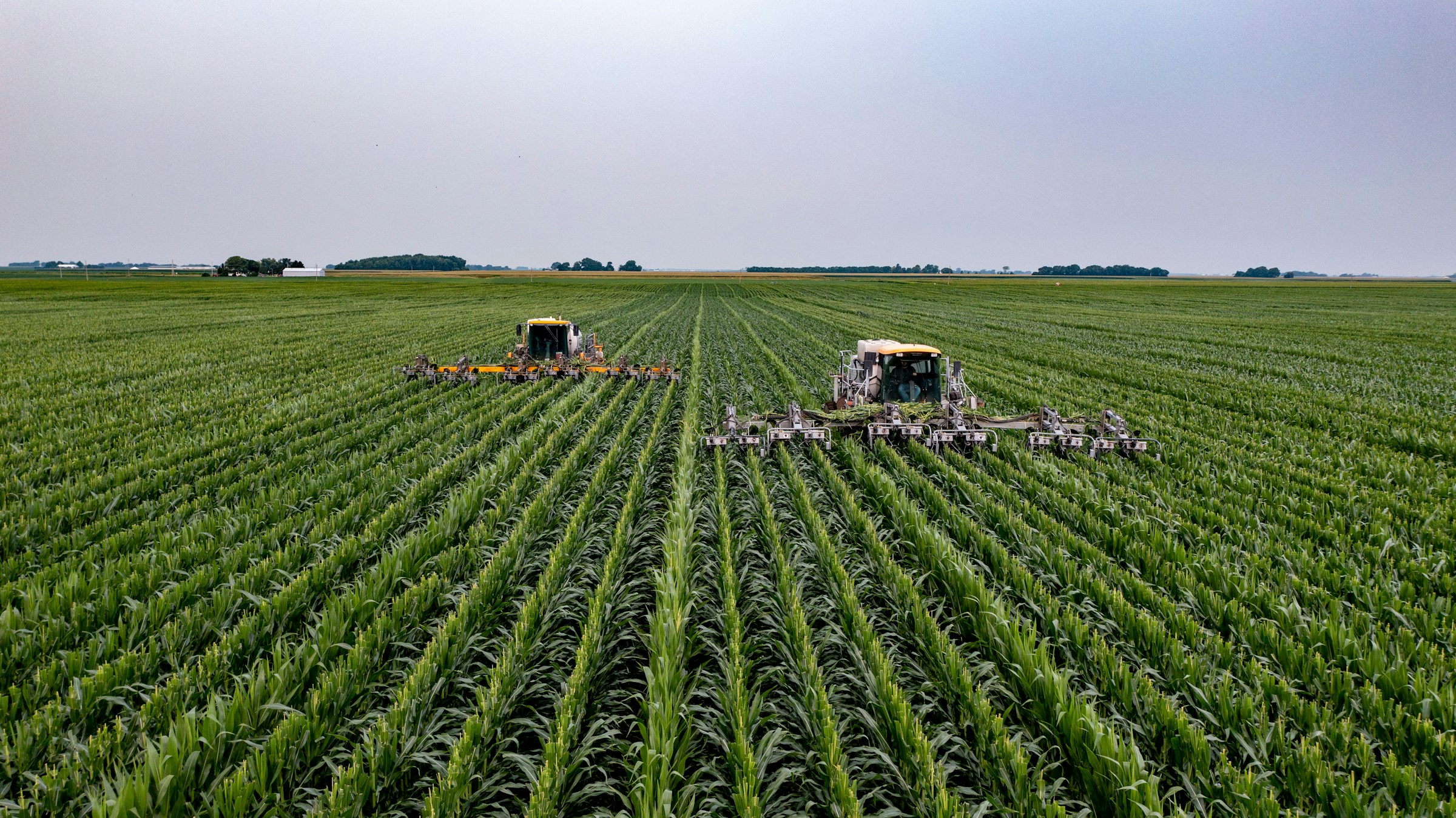Agriculture Plan Reforms for a Lasting Future
Agriculture Plan Reforms for a Lasting Future
Blog Article
Enhance Agricultural Productivity With High-Quality Water Soluble Polymers
These polymers supply an array of benefits that can change conventional farming techniques, from boosting water retention and efficiency to enhancing dirt framework and nutrient delivery systems. By taking advantage of the power of innovative polymer remedies, farmers can potentially open brand-new paths towards accomplishing higher plant returns while alleviating ecological influences.

Benefits of Water-Soluble Polymers
Water-soluble polymers use a plethora of advantages in agricultural applications as a result of their enhanced water retention homes and ability to boost dirt structure. Agriculture. These polymers, when added to the dirt, can considerably enhance water holding capability, decreasing the frequency of irrigation called for by plants. By developing a gel-like compound when blended with water, water-soluble polymers develop a storage tank that gradually releases moisture to plant origins, making sure a much more constant supply of water during completely dry spells
In addition, these polymers help in protecting against soil disintegration by binding soil particles with each other, thereby improving dirt structure and security. Boosted soil framework enables far better origin infiltration and aeration, promoting much healthier plant development and greater crop returns. Water-soluble polymers additionally aid in nutrient retention by minimizing leaching, guaranteeing that important nutrients stay offered to plants for a longer duration.
Improved Water Retention and Effectiveness
Enhancing farming water retention and efficiency via the incorporation of advanced polymer technologies has ended up being a vital emphasis in modern farming practices. Water-soluble polymers play an important function in enhancing dirt framework, enhancing water infiltration, and decreasing water dissipation rates. By creating a thin film on the dirt surface, these polymers help to avoid water overflow and boost the dirt's water-holding capacity, ensuring that plants have access to an adequate water supply.
Moreover, making use of top notch water-soluble polymers can substantially reduce the frequency of irrigation, as they improve the soil's capacity to retain moisture for longer durations. This not only saves water however likewise reduces the power and labor prices linked with watering methods. Furthermore, boosted water retention and efficiency cause much better nutrient uptake by plants, causing boosted crop yields and total farming productivity.
Boosted Nutrient Delivery Systems
Provided the considerable influence of high-quality water-soluble polymers on enhancing water retention and performance in agriculture, the focus now changes in the direction of maximizing nutrient distribution systems to additionally enhance crop development and yield. Boosted nutrient distribution systems play an important duty in making certain that plants obtain the required nutrients in a kind that is easily available for uptake, promoting their general health and productivity. By integrating water-soluble polymers into nutrient delivery systems, the efficiency of nutrient uptake by plants can be considerably improved.
One trick advantage of making use of top notch water-soluble polymers in nutrient shipment systems is their capability to regulate the release of nutrients, guaranteeing a controlled and stable supply to plants over an extensive period (Agriculture). This controlled release device helps stop nutrient leaching and overflow, thus making best use of vitamins this website and mineral usage by plants and lowering environmental impact

Soil Framework Optimization Methods
Enhancing soil framework is paramount in modern-day farming for taking full advantage of crop yields and promoting sustainable land administration methods. Soil structure optimization techniques play a vital function in making sure that dirt offers an optimal environment for plant growth. One essential method is the addition of organic issue, such as garden compost or manure, which helps boost soil structure by improving its water-holding capability and nutrient retention.
Furthermore, practicing minimal tillage or no-till farming can protect against dirt compaction and promote the growth of a healthy and balanced soil framework. Cover official site cropping is an additional reliable technique that involves growing plants especially to improve the dirt and secure, avoiding disintegration and enhancing soil framework.
In addition, carrying out plant rotation methods can aid break parasite and condition cycles, while also improving dirt framework via the differing root frameworks of different crops. In general, utilizing these dirt framework optimization techniques can result in raised agricultural productivity, decreased environmental influence, and lasting sustainability in farming practices.
Lasting Solutions for Crop Yields

To deal with the difficulties of maximizing plant returns while advertising sustainable land monitoring methods, discovering sustainable options comes to be critical in modern-day agriculture. One lasting service for improving crop yields is try these out the use of precision agriculture strategies.
Moreover, promoting crop turning and cover chopping can assist keep soil health and wellness, minimize erosion, and enhance vitamins and mineral biking, inevitably adding to greater yields with time. Integrated parasite monitoring methods likewise play an essential function in lasting crop production by reducing the dependence on chemical pesticides and advertising natural bug control methods.
In addition, purchasing research study and technology for establishing drought-resistant plant ranges and climate-resilient farming techniques can assist mitigate the influence of climate change on agriculture while making certain constant returns despite ecological difficulties. By embracing these lasting services, farmers can achieve higher plant yields while guarding the health of the land for future generations.
Conclusion
Finally, using top notch water-soluble polymers in agriculture supplies many benefits such as improved water retention, boosted nutrient delivery systems, and maximized soil structure. By implementing lasting services for plant yields, farmers can significantly boost farming efficiency and efficiency. Agriculture. Water-soluble polymers provide a eco pleasant and cost-effective technique to improve the total performance of farming practices, causing much better results for both farmers and the atmosphere
These polymers provide an array of benefits that can transform typical farming approaches, from boosting water retention and performance to optimizing dirt structure and nutrient distribution systems.In addition, these polymers help in stopping dirt disintegration by binding soil particles together, consequently boosting soil structure and stability. By forming a slim movie on the dirt surface, these polymers assist to stop water overflow and raise the dirt's water-holding capacity, making sure that plants have access to an appropriate water supply.
Dirt structure optimization methods play an important role in making sure that soil provides a perfect setting for plant development.In verdict, the use of high-grade water-soluble polymers in farming provides countless benefits such as better water retention, boosted nutrient delivery systems, and enhanced dirt structure.
Report this page